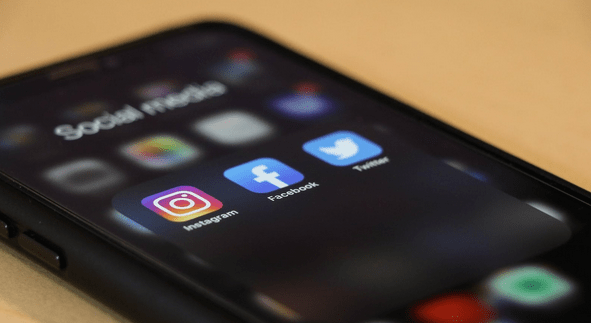By Ben Abraham
With digital video shorts and reels, there is tremendous opportunity to inspire new audiences that may not have resonated with certain brands.
Platforms like TikTok, Instagram Reels, and YouTube Shorts have ushered a new era for social entertainment over recent years, and the trend of bite-sized, digestible video isn’t going away anytime soon. Approximately 54% of people demand more video content on top of what they already consume, while viewers claim they retain 95% of a message when obtained via video. Video content continues to empower influencers and brands alike to gain connections with audiences, so when we think about supply we also have to think about the representational ramifications.
As audiences become more willing to become engaged in communities and act as brand advocates, there is tremendous opportunity to inspire new audiences that may not have resonated with certain brands, products, or services in the past. When it comes to diversity and representation within content, a recent survey found that 94% of Gen Z consumers expect companies to take a stand on important social issues.
Meaningful connections and brand loyalty can be positively impacted as a direct result of authentic and diverse storytelling that truly represents our modern world. With this new era of content creation comes the responsibility to create diverse stories in short form—which is a task that many seem to find easier said than done.
Putting principle into practice
From a business perspective, it comes down to dollars and cents. Approximately 69% percent of brands with representation initiatives saw an average stock gain, which means prioritizing diverse voices impacts a brand’s bottom line. At the same time, these brands appeal to a wider range of intersectional audiences, which can deliver measurable and profitable benefits.
From a human interest perspective, consumers are constantly seeking purchasing opportunities (both intentionally and unintentionally) that align with their core beliefs and values. Diverse and inclusive video content allows purposeful brands to build reliable retention mechanisms and position themselves for long-lasting relationships with consumers that align with those key messages and values.
Implementing inclusive content is complex and nuanced. However, making a difference through diverse content, as well as implementing the right stepping stones, affects many organizational facets, both internal and external. Here are three best practices.
Diverse teams equal diverse content
Ensuring a diverse cast is in front of the camera as well as behind the camera is imperative to producing meaningful, diverse storytelling content. In addition to diverse casts when producing content, building internal reviews and concept development teams that consist of as many different perspectives and historically excluded voices as possible can help brands produce more inclusive work.
When it comes to the ideation and validation of creative directions, hiring outside consultants from non-profit organizations or public interest groups can also help drive more inclusive messaging in an authentic way. When producing content, teams can often feel ill-equipped to approach launches that consist of different communities and lived experiences in which they may not have a foundational background. It’s important to bring on creators and partners who can give guidance on projects. By tapping into broader networks to connect to true experts that help tell a better story, you can avoid the pitfalls of producing work that does not quite hit the mark.
Empower diverse decision-makers
Due diligence is key when formulating plans to get to know the audiences your organization strives to represent and connect with—but the degrees of representation have to go deeper. In today’s world, it’s far too common to see a demand for content that represents a particular group that isn’t present on a leadership team. Promoting leaders that drive the conversation in the ideation and creative direction of initiatives, as well as all facets of campaigns including promotions, publicity, and digital media assets, can make a massive difference toward achieving diverse content creation goals.
Through this action, companies can move effectively beyond serving as allies and into accomplice terminology to effectively propel action. Decision-makers should continue to make recommendations and have influence that allows the right people to flourish and make additional decisions to implement diverse storytelling.
Take nuance into account
Thinking beyond the binary of your lived experience, as well as beyond the moment, can aid in making video content more diverse. This nuance can come in many forms. It demonstrates that the development and production team either spoke to or has members of historically excluded communities that have been ingrained in the development of a piece of video content.
Looking at, for examples, the LGBTQIA+ community, many brands only consider their representation doing Pride Month in June, when this group should be represented and considered throughout the year. Actions such as implementing pride initiatives year-round show that brands actually walk the walk by embodying values consistently as opposed to taking notice of a trending hashtag or a single moment in time. Organizations should not be speaking on behalf of underrepresented communities if they do not have the structural and policy infrastructure in place to support these communities.
Bottom line: It’s crucial to look at internal processes and external failures to effectively create an ecosystem of truly diverse video storytelling. Rather than approaching diversity from a clout-chasing perspective, an intersectional approach to your business’s work creates a positive emotional connection with target audiences, drives a proof-positive financial advantage in differentiation strategies, and is an accurate reflection of the realities and truths of the world we live in today. Implementing more diverse storytelling in video content shouldn’t be a rush job. Brands must take the time to craft an effective and meaningfully intersectional approach to the ever-evolving journey in front of and behind the camera lens. Learning, doing, making mistakes, and recovering is all a part of that ever-evolving journey.
Feature Image Credit: Nosyrevy/Getty Images; nadia_bormotova/Getty Images
By Ben Abraham
Ben Abraham is senior brand manager for Storyblocks.












